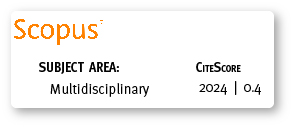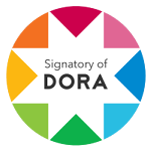Un análisis tentativo de los factores de estrés causal de estudiantes graduados de la Universidad de Nuevo México en Albuquerque, Nuevo México
DOI:
https://doi.org/10.18537/mskn.07.02.04Palabras clave:
eustress, distress, factores internos y externos, índice de felicidad, estudiantes de posgrado, diferenciación culturalResumen
El estrés es un reflejo de la respuesta del cuerpo a diferentes exigencias, y por lo general se acepta que las buenas y las malas experiencias pueden causar estrés. Existe el estrés positivo (eustress) y negativo (distrés), y ambos afectan a las personas. Los factores que causan estrés van desde fisiológicos (p.e., el miedo al peligro) a lo emocional (p.e., la preocupación por el dinero o la familia), y varían de persona a persona. La pregunta de investigación de este estudio fue si las causas del estrés son diferentes entre los estudiantes de América Latina y de Estados Unidos, pertenecientes al Programa de Estudios América Latina de la Universidad de Nuevo México (UNM) en Albuquerque, Estados Unidos. El artículo describe cómo los estudiantes locales y extranjeros graduados perciben su estrés. Los resultados revelaron que los cuatro factores principales de estrés, comunes para los estudiantes universitarios, son: responsabilidad académica, gestión del tiempo, situación financiera y relaciones personales. Seis métodos cualitativos como la observación, entrevistas individuales, grupos focales, análisis colectivo, mapeo social, y el análisis visual, se utilizaron para recoger perspectivas del fenómeno del estrés. La información recogida fue codificada, organizada, clasificada y consolidada utilizando la base de datos Atlas.ti y analizada mediante la técnica de triangulación. Los resultados muestran que la percepción de estrés es significativamente influenciada por las diferencias culturales entre los estudiantes.
Descargas
Métricas
Citas
Aquino, G.V., 2003. Effective teaching (3rd ed.). Mandaluyong City, Philippines: National Book Store.
Atlas.ti, 2016. ATLAS.ti 7: User guide and reference. Available at http://atlasti.com/wp-content/uploads/2014/05/atlasti_v7_manual_201312.pdf?q=/uploads/media/atlasti_v7_manual_201312.pdf, 469 pp.
Burawoy, M., 1998. The extended case method. Sociological Theory, 16(1), 4-33.
Chadna, P., 2006. Stressors-External and internal. The stress barrier-nature’s way to overcoming stress. Dublin, Ireland: Blackhall Publishing.
Copier, T., 2010. Autoethnography: Differences in the American and Ecuadorian culture. StudyModeResearch, available at http://www.studymode.com/essays/Differences-In-The-American-And-Ecuadorian-471588.html, 5 pp.
Crum, A.J., P. Salovey, S. Achor, 2013. Rethinking stress: the role of mindsets in determining the stress response. Journal of Personality and Social Psychology, 104(4), 716-33.
D’Zurilla, T.J., C.F. Sheedy, 1991. Relation between social problem-solving ability and subsequent level of psychological stress in college students. Journal of Personality and Social Psychology, 61(5), 841–846.
Davies, B., L. Ellison, A. Osborne, J.W. Burham, 1995. Education management for the 1990´s. Upper Saddle River, NJ: Financial Times Prentice Hall.
Ellis, A., R.A. Harper, 1975. A guide to rational living. Chatsworth, CA: Wilshire Book Co.
Gordon, E., E. Golanty, 2016. Health and wellness. Burlington, MA, Jones and Bartlett Learning.
Hargrove, M., D. Nelson, C. & Cooper, 2013. Generating eustress by challenging employees: Helping people savor their work. Organizational Dynamics, 42(1), 61-69.
Holmes, T.H., R.H. Rahe, 1967. College student’s stressful event checklist: Instructions. Available at https://students.asu.edu/files/StressChecklist.pdf, 2 pp.
Kabat-Zinn, J., 2013. Full catastrophe living - How to cope with stress, pain and illness using mindfulness meditation. London, United Kingdom: Piatkus Book.
Kras, E.S., 2006. Management in two cultures: Bridging the gap between U.S. and Mexican managers. New Scotland, NY: Intercultural Press.
Le Fevre, M., G.S. Kolt, J. Matheny, 2006. Eustress, distress and their interpretation in primary and secondary occupational stress management interventions: which way first? Journal of Managerial Psychology, 21(6), 547-565.
Lucier, K.L., 2013. How to identify the sources of stress in college. Retrieved on the 1st of May 2016, from http://collegelife.about.com/ od/healthwellness/a/How-To-Identify-The-Sources-Of-Stress-In-College.htm.
Matheny, K.B., B.E. Roque, W.L. Curlette, 2008. Perceived stress, coping resources, and life satisfaction among U.S. and Mexican college students: A cross-cultural study. Anales de Psicología. Servicio de Publicaciones de La Universidad de Murcia, 24(1), 49-57.
Mazo, G.N., 2015. Causes, effects of stress, and the coping mechanism of the Bachelor of Science in Information Technology students in a Philippine University. Journal of Education and Learning, 9(1), 71-78.
O’Sullivan, G., 2011. The relationship between hope, eustress, self-efficacy, and life satisfaction among undergraduates. Social Indicators Research, 101(1), 155-172.
Prather, C., 2013. 8 stress busters: More balance means less stress and a better body. Retrieved on the 1st of May 2016, from http://www.bodybuilding.com/fun/8-stress-busters-more-balance-means-less-stress-better-body.html.
Quick, J.C., T.A. Wright, J.A. Adkins, D.L. Nelson, J.D. Quick, 2013. Preventive stress management in organizations (2nd ed.). Washington D.C.: American Psychological Association.
Reifman, A., 2011. Stress in college students. Retrieved on the 1st of May 2016, from https://www.psychologytoday.com/blog/the-campus/201110/stress-in-college-students.
Selye, H., 1974. Stress without distress. Philadelphia, PA: Lippincott Williams & Wilkins.
Skye, S., 2003. Understanding the Spanish-speaking South Americans: Bridging Hemispheres. Boston, MA: Intercultural Press, Inc.
Smith, C.A., 1991. The self, appraisal and coping. Handbook of Social and Clinical Psychology: The Health Perspective. Elmsford, NY: Pergamon Press Inc.
Smith, C.A., E.M. Tong, P.C. Ellsworth, 2016. The differentiation of positive emotional experience as viewed through the lens of appraisal theory. In: Tugade, M.M., M.N. Shiota, L.D. Kirby (Eds.), Handbook of Positive Emotions (pp. 11-27). New York, NY: Guilford Press.
Suedfeld, P., 1997. Reactions to societal trauma: Distress and/or Eustress. International Society of Political Psychology, 18(4), 849-861.
Descargas
Publicado
Cómo citar
Número
Sección
Licencia
Copyright © Autors. Creative Commons Attribution 4.0 License para cualquier artículo enviado a partir del 6 de junio de 2017. Para los manuscritos presentados anteriormente, se utilizó la licencia CC BY 3.0.
![]()
Usted es libre de:
 |
Compartir — compartir y redistribuir el material publicado en cualquier medio o formato. |
 |
Adaptar — combinar, transformar y construir sobre el material para cualquier propósito, incluso comercialmente. |
Bajo las siguientes condiciones:
 |
Atribución — Debe otorgar el crédito correspondiente, proporcionar un enlace a la licencia e indicar si se realizaron cambios. Puede hacerlo de cualquier manera razonable, pero de ninguna manera que sugiera que el licenciador lo respalda a usted o a su uso. |
| Sin restricciones adicionales: no puede aplicar términos legales o medidas tecnológicas que restrinjan legalmente a otros a hacer cualquier cosa que permita la licencia. |
Mayor información sobre este acuerdo de autoría y licencia, transferencia de derechos o solicitudes de reproducción, pueden ser consultados en este enlace.









